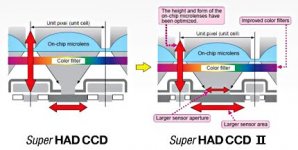Dear Ted,
You're missing the point. I don't care where it is made, either. My point was simply that the so-called 'Zeiss' Contax and 'Zeiss Ikon' are not Zeiss cameras, because Zeiss doesn't make consumer cameras any more. Another manufacturer must license the name and build the camera (and by extension, do all the R&D).
Cheers,
R.
Roger,
This is your original statement.
Have we not established that according to Zeiss's own statements, Cosina did not do all the R&D?
Even if we re-interpret the "we" as joint, it means that Zeiss & Cosina collaborated on the development, beginning with designs submitted under contract by Henssler & Schultheiss as well as some also from Porsche? That's R&D from several sources, not simply a Cosina design.
Doesn't it mean that Zeiss also had input into the specs & requirements, that Zeiss was involved in lab testing the prototypes, in evaluating field testing of the early versions, & in deciding on revisions to those early versions before the final version was set? After all, they do call their involvement in this process "unprecedented" - which would imply something different from the cooaboration between Zeiss & Yashica that resulted in Contax.
The website calls special attention to the lens in the viewfinder. Clearly Zeiss had input into this element of the camera. Since they are a lens designer, I assume that their input was very important although nothing is explicitly stated either way.
And if Cosina simply licensed the Zeiss name, why is Zeiss warrantying a Cosina product? Is Carl Zeiss AG in the habit of warrantying products from other manufacturers? Why are they marketing & servicing the product? This is not simply a 2nd act by Cosina of appropriating the Voigtlander name & badging one of their cameras with it. In this case, Zeiss actually had something to do with the development of the camera.
I realize that Zeiss does not manufacture any of the parts, but then Cosina doesn't manufacture all of them either. My understanding is that the camera uses a modified Copal shutter.
I realize that Zeiss doesn't assemble the camera. But is assembly the key to saying who a camera or any other product belongs to? Engineers don't assemble prducts - automobiles, airplane engines, or cameras. But they are normally given credit for the final product.
As I re-read the Zeiss website, I certainly can see a lot of spin with the benefit of hindsight. But I'm left with the impression of a joint project, a collaboration, a partnership.
Although the camera is "made" in a Cosina factory, it appears to me that Zeiss was involved in the development, the design, the testing, the specifications, setting the standards, & the making decisions on materials, budget, & resulting compromises.. That seems to me to be the most important part of producing the product, of making it what it is. The physical assembly seems to me to be much less important in our modern world of robotics - unless something is handmade.
Finally, Zeiss has put their name on it, stamping it as their own, and stands behind it with their warranty. They then put the weight of their corporate presence behind it in marketing & servicing. Although I have no knowledge of the legalities of it, I have every impression that Zeiss owns the rights to the camera. It sure would be interesting to know to whom they actually belong.
Again I'm left with the final impression that this was a joint project through a partnership between 2 major manufacturers.
Isn't that the way many products are produced these days? My smart car is owned by the Mercedes division of Daimler, uses a Mitsubishi engine, and is built in a smart plant separate from any of those three. So, whose car is it? And who should get credit since the original design came from Swatch?
Maybe it would be fairer to call the Zeiss Ikon a Zeiss/Cosina product, but to say that it can't be Zeiss because they don't make consumer cameras any more doesn't seem to be right. They seem to have had a big hand in making this one. . .
. . . unless of course they've just been exaggerating about their involvement all along & only agreed to license their name to an idea presented to them by Cosina & taken from design through production by Cosina. Since Zeiss has gone out of their way with
extensive documentation & active involvement to create exactly the opposite impression, I would say in that case that they have crossed the line from spin and exaggeration to outright lying. A good lawyer might be able to win their case in court - but not in the course of public opinion.
I would like to keep faith with Zeiss, so I choose to believe that their involvement from the very beginning was extensive enough that they can legitimately call this camera their own . . . theirs & their partner's.
Finally, I must ask if we are to consider the lenses Cosina lenses by the same logic than you have dubbed this a Cosina camera?


